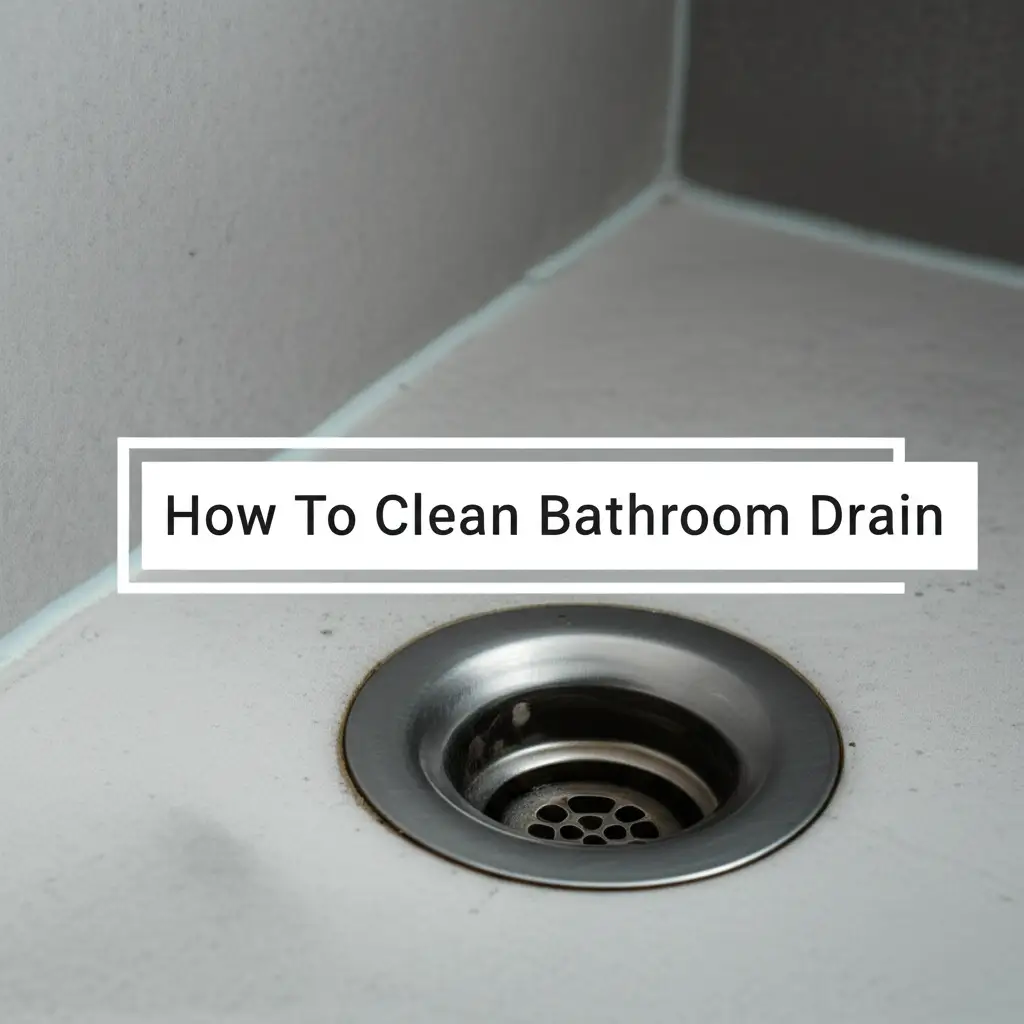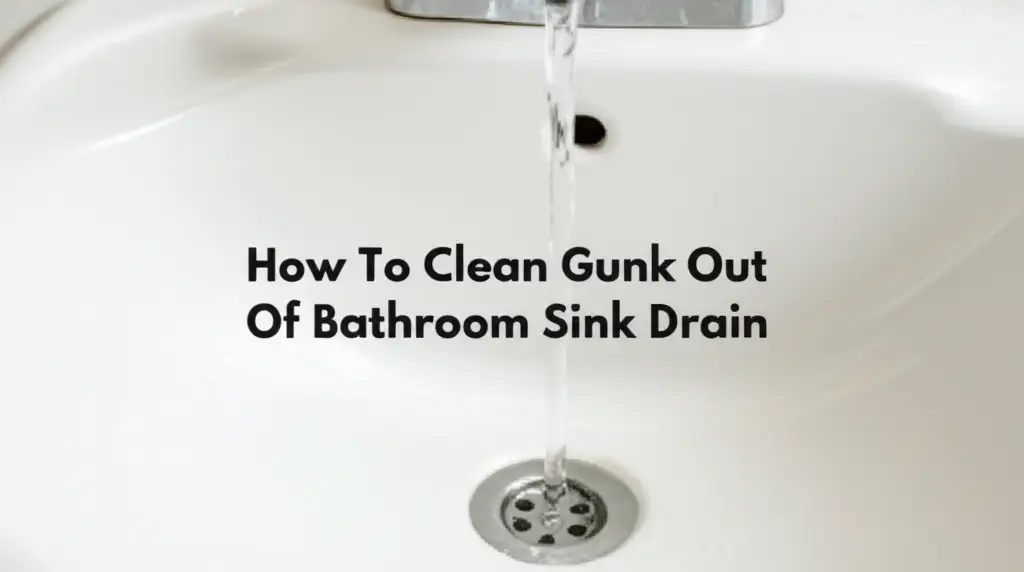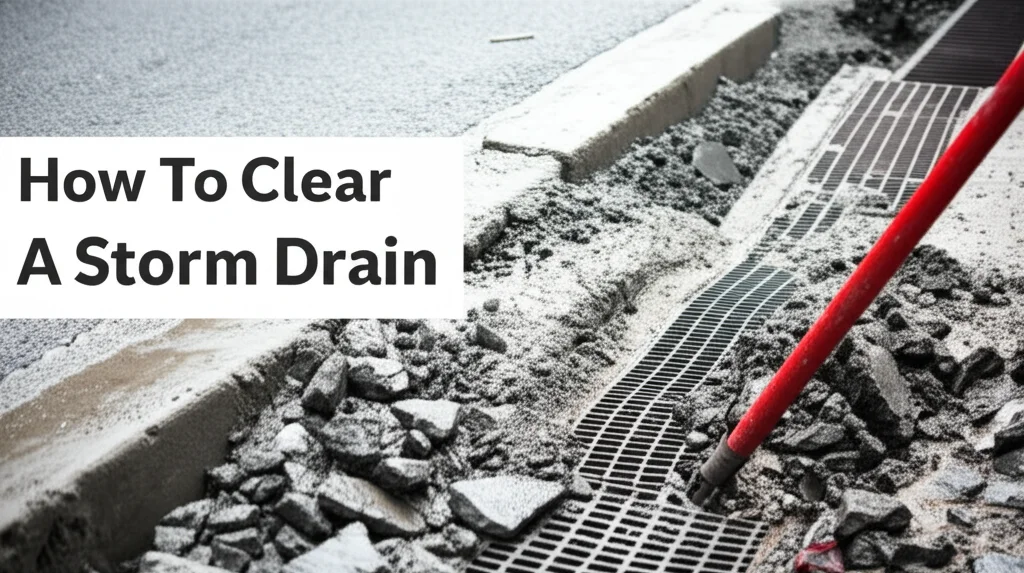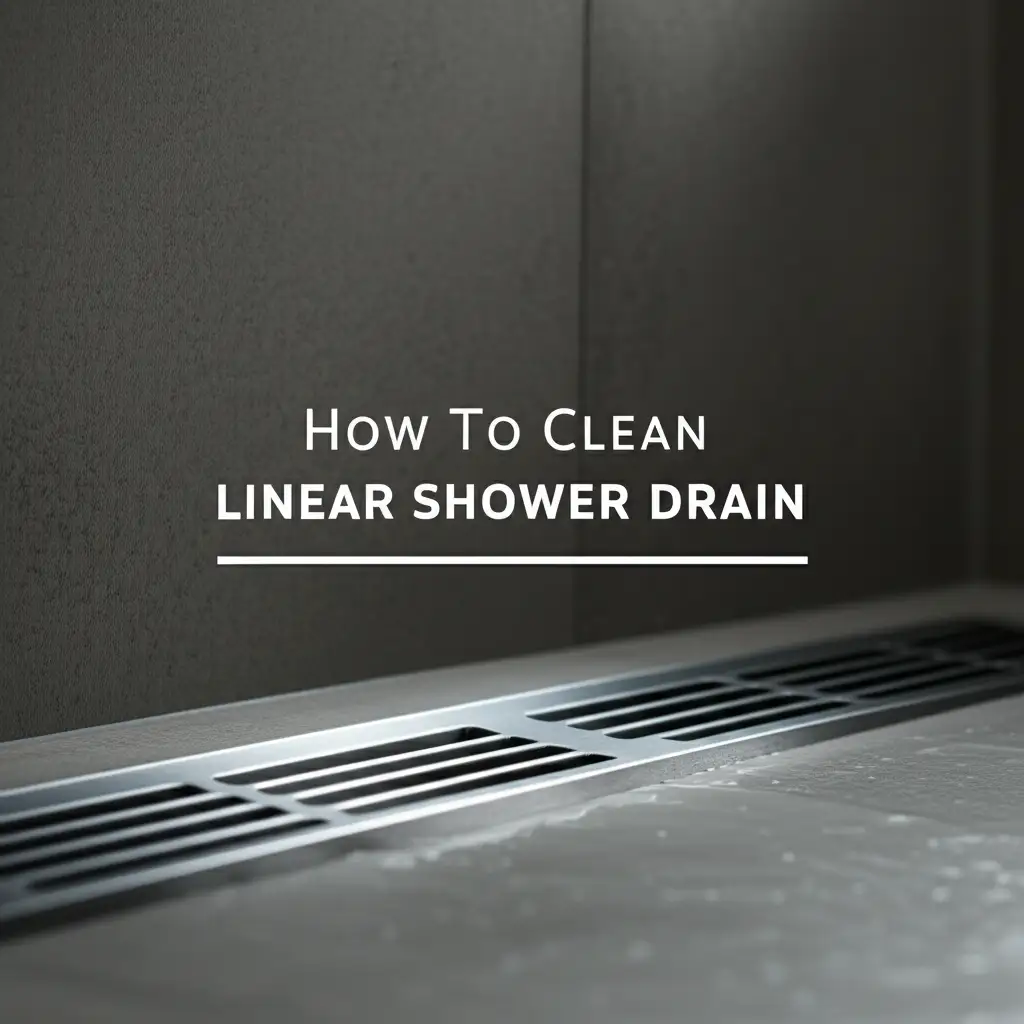· Home Maintenance · 12 min read
How To Clean Main Sewer Line

Clean Your Main Sewer Line: A Simple Guide
Imagine the frustration of multiple drains backing up in your home. This often signals a blockage in your main sewer line. Knowing how to clean main sewer line issues can save you stress and money. This guide helps you understand the process. We will explore common signs, necessary tools, and steps for effective cleaning. Get ready to tackle this important home maintenance task with confidence.
Takeaway
Cleaning your main sewer line involves identifying the problem, gathering the right tools, and applying a suitable method. For most homeowners, this means:
- Recognizing the early warning signs of a blockage.
- Understanding the proper use of a sewer auger or hydro-jetter.
- Prioritizing safety throughout the cleaning process.
- Knowing when to seek professional plumbing help.
- Implementing preventative measures to avoid future clogs.
How to clean main sewer line? You can clean your main sewer line by first identifying the cleanout access point, then using a specialized tool like a sewer auger or a rented hydro-jetter to break apart or push through blockages, ensuring proper safety precautions are followed.
Understanding Your Main Sewer Line System
Your main sewer line is a vital part of your home’s plumbing. It carries all wastewater from your sinks, toilets, and showers. This main line then connects to the municipal sewer system or your septic tank. When it gets blocked, problems quickly spread throughout your entire home. Understanding its function helps you maintain it well.
Common problems include tree root intrusion. Roots grow into cracks in the pipes seeking water. Grease buildup is another frequent culprit. People often pour cooking grease down drains, but it hardens in the pipes. Hair, soap scum, and non-flushable items also contribute to blockages. Identifying the cause helps you choose the best cleaning method. Ignoring these signs leads to bigger issues.
Knowing where your cleanout access is located is crucial. This is a capped pipe designed for direct access to your main sewer line. It allows you to insert tools for cleaning. Most homes have one near the foundation, often in the front or back yard. Some might have one in the basement or utility room. Locate yours before a problem arises. This access point is key to efficiently clean main sewer line blockages.
When to Clean Your Main Sewer Line
Recognizing the signs of a clogged main sewer line is the first step. You do not want to wait for a disaster. Early detection helps prevent extensive damage. Being proactive saves you money and inconvenience. Pay attention to your home’s plumbing behavior.
One common sign is multiple plumbing fixtures backing up. If your toilet overflows when you flush a sink, this is a strong indicator. Another sign is water backing up in unusual places. You might see water from the washing machine drain flowing into your shower. This indicates a significant blockage further down the line.
Slow drains throughout your house are also a warning. If water drains slowly from all your sinks and tubs, it points to a main line issue. Isolated slow drains usually mean a problem in that specific fixture’s branch line. Foul odors coming from drains are another red flag. Sewer gas escaping can indicate a clog that traps waste. Regular maintenance helps you avoid these issues. Consider cleaning every few years as a preventative measure, especially if you have older pipes or large trees nearby.
Essential Tools for Main Sewer Line Cleaning
Having the right tools makes cleaning your main sewer line much easier. Do not attempt this job without proper equipment. Using the wrong tool can cause more damage. Select your tools based on the likely cause and severity of the clog.
A sewer auger, also known as a drain snake, is a common tool. It is a long, flexible cable with a cutting head. You feed it into the cleanout to break up or retrieve blockages. Manual augers are good for smaller clogs. Electric models offer more power and reach. They can extend 50 to 100 feet. This length is usually sufficient to reach main line clogs. Ensure the auger head is appropriate for the type of blockage.
For tougher clogs, a hydro-jetter is a powerful option. This machine uses high-pressure water to blast away blockages. It is very effective for grease, sediment, and even tree roots. You can rent hydro-jetters from equipment rental stores. They require careful handling due to the high pressure. Training on how to use them safely is essential. Improper use can damage pipes. This tool can clean out various lines, similar to how you might clean an AC drain line with an air compressor for clearing blockages, but with much greater force.
Other useful items include heavy-duty gloves, safety glasses, and a bucket. These protect you from raw sewage and splashes. A flashlight helps you see inside the cleanout. Having old towels or rags on hand is also smart for cleanup. These basic safety items are important for any plumbing task. For instance, similar safety considerations apply when you clean a furnace condensate drain line to prevent water damage.
DIY Methods to Clean a Main Sewer Line
Cleaning your main sewer line yourself can be a rewarding task. It requires patience and proper execution. Follow these steps carefully to ensure success and safety. Always wear protective gear before starting.
Using a Sewer Auger (Drain Snake):
- Locate the Main Sewer Cleanout: Find the cleanout pipe. This is usually a 3 or 4-inch capped pipe. It stands above ground near your home’s foundation.
- Prepare the Area: Lay down tarps or old newspapers. This protects the area from wastewater. Have a bucket ready for any debris.
- Remove the Cleanout Cap: Use a wrench to loosen the cap. Be prepared for a rush of standing water if there is a significant clog. Slowly remove the cap.
- Insert the Auger: Feed the auger cable into the cleanout opening. Push it slowly until you feel resistance. This resistance indicates the clog.
- Break Through the Clog: Once you hit the clog, operate the auger. For electric models, turn it on and let the cutting head work. For manual models, crank the handle. Keep pushing and rotating the cable. This helps the head break through or grab the blockage. You might feel it chew through roots or break up debris.
- Retrieve or Push Through: Continue until the resistance lessens or disappears. If you feel it grab something, try to pull it out. If not, continue pushing to clear the line. This might involve pushing the blockage all the way to the municipal sewer.
- Run Water: Once you think the clog is clear, slowly turn on an outdoor hose or run water from an indoor faucet nearest to the cleanout. Check if the water flows freely down the drain. Flush toilets to confirm.
- Clean Up: Slowly withdraw the auger, cleaning it as you pull it out. Replace the cleanout cap tightly. Dispose of any debris properly.
Using a Rented Hydro-Jetting Machine (Advanced DIY): Hydro-jetting is more powerful and usually best left to professionals. However, if you are experienced and decide to rent a machine:
- Read Instructions Carefully: Hydro-jetters are high-pressure tools. Understand all safety warnings and operating procedures.
- Connect to Water Source: Attach the jetter to a water hose.
- Insert Nozzle: Carefully insert the jetting nozzle into the cleanout. Push it a few feet into the pipe before turning on the water.
- Activate Water Pressure: Turn on the water and gradually increase pressure. The water stream pulls the hose further into the pipe. Move it back and forth slowly. The high-pressure water breaks up clogs and flushes them away.
- Monitor Drainage: Periodically check if the water is draining freely.
- Withdraw and Clean: Turn off the water pressure before removing the nozzle. Clean the hose and equipment thoroughly.
Remember, safety is paramount with these powerful tools. Proper use ensures effective cleaning of your main sewer line. Just as you might clean a mini-split drain line to prevent mold, a main sewer line needs thorough cleaning to prevent serious issues.
Preventative Maintenance for Your Main Sewer Line
Preventative maintenance is the best way to avoid severe main sewer line clogs. A little effort now saves a lot of hassle later. Incorporating these simple habits into your routine will keep your pipes flowing smoothly. Think of it like regular check-ups for your car.
Firstly, be mindful of what goes down your drains. Grease is a major culprit for sewer line blockages. Never pour cooking oil, butter, or any greasy substances down your sink. They solidify in pipes, creating sticky obstructions. Instead, collect grease in a container and dispose of it in the trash. This single habit significantly reduces the risk of clogs. This is similar to how you would prevent clogs in smaller lines, such as when you clean a refrigerator ice maker water line to prevent mineral buildup.
Secondly, avoid flushing non-flushable items down your toilet. Wet wipes, paper towels, feminine hygiene products, and cotton swabs do not break down in water like toilet paper. They accumulate and form large clogs. Teach everyone in your household about proper disposal methods. Even “flushable” wipes often cause problems. Stick to toilet paper only.
Regularly flush your drains with hot water. Once a week, run hot water from your kitchen and bathroom sinks for several minutes. This helps dissolve minor grease buildup and wash away soap scum before it becomes a problem. Some people also pour a mixture of baking soda and vinegar, followed by hot water, to help clear minor clogs and keep drains fresh. This can be effective for smaller, superficial blockages.
Consider professional inspections, especially if you have older pipes or mature trees near your sewer line. Plumbers can perform video inspections. This lets them see inside your pipes. They can spot potential issues like tree root intrusion or deteriorating pipes before they cause major blockages. Early detection allows for targeted repairs or preventative cleaning. Regular inspections are a wise investment for long-term plumbing health.
When to Call a Professional for Main Sewer Line Issues
While DIY methods can be effective, there are times when calling a professional plumber is essential. Knowing your limits prevents further damage and ensures a proper fix. Sometimes, a problem is beyond simple home remedies.
You should call a professional if your DIY attempts fail. If you have tried snaking the line multiple times and the clog persists, it is time for expert help. Stubborn blockages often require specialized equipment or deeper expertise. Professionals have industrial-grade tools like powerful hydro-jetters and cameras. These tools can handle the most challenging clogs, like heavy tree root infestations.
Another reason to call a pro is if you suspect pipe damage. If you hear gurgling sounds even after clearing a clog, or if you notice recurring issues, there might be a broken pipe. Tree roots can crack pipes. Shifting ground can cause misalignment. A professional plumber uses video inspection cameras to identify internal pipe damage. They can pinpoint the exact location and nature of the problem. This helps them recommend the correct repair, such as pipe repair or replacement.
Furthermore, any time you feel uncomfortable or unsafe, call a professional. Working with raw sewage carries health risks. Operating powerful tools like electric augers or hydro-jetters without proper training can be dangerous. Plumbers are trained, insured, and equipped to handle these situations safely. They also carry permits for certain repairs. Do not hesitate to call if the task feels overwhelming. They can easily clean your main sewer line with their advanced tools and knowledge.
Safety First: Important Precautions During Sewer Line Cleaning
Safety is paramount when you clean main sewer line blockages. You are dealing with wastewater and potentially hazardous materials. Taking proper precautions protects your health and prevents accidents. Never rush the process or skip safety steps.
Always wear heavy-duty gloves. These protect your hands from sewage, dirt, and sharp edges. Sewer water contains bacteria and pathogens. Gloves create a barrier. Safety glasses or goggles are also crucial. They shield your eyes from splashes of dirty water and flying debris. A face mask can prevent you from inhaling noxious fumes or aerosolized particles. Good ventilation is also important. If working indoors, open windows and doors.
Ensure the area around the cleanout is clear and stable. You do not want to trip or slip while operating equipment. Keep children and pets away from the work zone. The tools used, especially electric augers, can cause serious injury if not handled properly. Read all instructions for your specific tools before starting. Understand how to operate them safely. For instance, similar to how you use specific safety gear when you clean a fridge water line, working with a main sewer line requires even more robust protection due to the nature of the materials involved.
Avoid using chemical drain cleaners in your main sewer line. These products contain harsh chemicals. They can damage your pipes, especially older ones. They also create dangerous fumes. Moreover, they rarely clear tough main line clogs. If the chemicals fail, they leave a corrosive, toxic liquid in your pipes. This makes the job more dangerous for anyone who then attempts to use a snake or hydro-jetter. For cleaning specific types of small drain lines, a plumber might recommend certain chemicals, but for a main sewer line, physical removal methods are always preferred.
Have a first-aid kit nearby. In case of minor cuts or scrapes, you can clean and cover them immediately. After completing the job, thoroughly wash your hands and any exposed skin with soap and water. Disinfect your tools properly. Proper cleanup prevents the spread of bacteria. Your health and safety should always come first.
Conclusion
Tackling a clogged main sewer line can feel daunting, but with the right knowledge and tools, it is a manageable task for many homeowners. We explored how to clean main sewer line blockages by understanding the system, recognizing warning signs, and using effective DIY methods like snaking. We also highlighted the importance of preventative maintenance to keep your drains flowing freely and discussed when it is best to call in a professional.
Always prioritize safety by wearing protective gear and avoiding harsh chemical cleaners. Regular vigilance and proactive steps will help you avoid costly repairs and inconvenient backups. Remember, a well-maintained main sewer line contributes to a healthy and functional home. If you are unsure or the clog persists, do not hesitate to contact a qualified plumber. They possess the expertise and advanced equipment to resolve complex issues efficiently and safely. Keep your pipes clear and your home running smoothly!
- Sewer Line Cleaning
- Drain Maintenance
- Clogged Drain
- DIY Plumbing
- Hydro Jetting
- Sewer Auger




